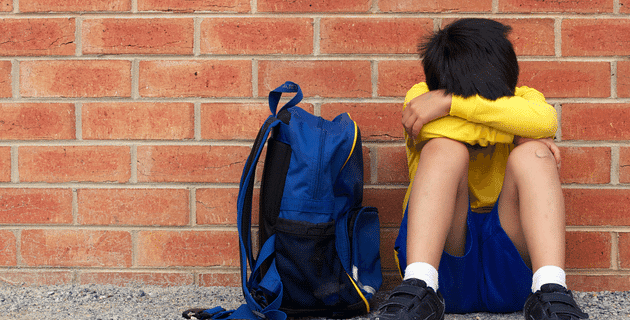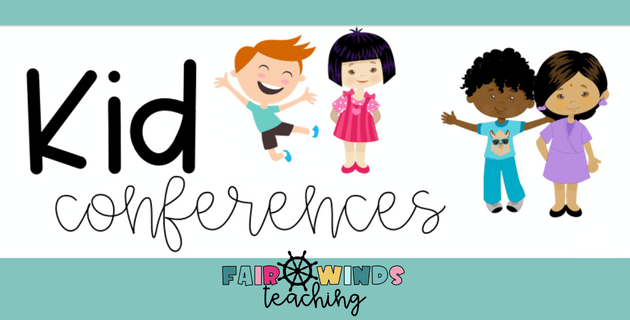
by California Casualty | Homeowners Insurance Info |
It takes just about 30 seconds for a small fire to turn into a major blaze. That same fire can destroy your home in minutes. Spending some time to fireproof your home, inside and out, can help to protect it. Fireproofing can also buy you precious time if you need to escape your home and get to safety.
Whether it’s a fire that accidentally started in your home or a wildfire in your area that could affect you, the following guide lists ways to reduce the risks.
Inside Your Home
The kitchen is a common place for fires to start while we’re cooking.
-
- Clean the grease and oil on your stovetop and around your stove. These oil deposits are fuel for a fire.
- Avoid storing things above or around the stove that can catch fire, such as pot holders, paper towels, and wooden spoons. Make sure flammable cleaning chemicals are stored safely away, too.
- Stay in the kitchen when you’re cooking. Don’t leave your home with the oven on.
- If a fire occurs in the kitchen, cover the flames and remove it from the heat. Don’t douse it with water. That can cause an explosion of oil. See our blog for tips on how to prevent and handle cooking fires.
Electrical outlets can only handle a certain amount of power. Overloading them can lead to a fire.
-
- Don’t overload outlets. Limit the use of extension cords. Don’t plug too many appliances into one outlet.
- Unplug appliances (coffee maker, toaster) when not in use.
- Plug large appliances directly into wall outlets, not into extension cords.
- If you’re constantly tripping the breaker or blowing a fuse, you’re either overloading your outlets or you may have something wrong with your electrical system. Get it checked out.
Space heaters can sometimes spark a fire. Position them carefully.
-
- Place your space heater on a hard non-flammable and level surface.
- Keep space heaters at least 3 feet away from anything that can burn.
- Avoid putting heater cords where they can be pinched by furniture, under rugs, or carpets.
- Turn off the heater and unplug it when you leave the room or go to bed.
Pro Tip: Choose a space heater with an automatic shutoff safety switch if it is overheated or tipped over.
Dryers are filled with dust, fibers, and lint that is fuel for fires.
-
- Clean the lint filter in your dryer before each use.
- Check the air vent pipe at least once a year and remove built-up lint.
- Clothes stained with chemicals or cooking oil should not be put into a hot dryer, even after a wash cycle. Use the lowest setting.
Smoke detectors and fire extinguishers are your best defense in the event of a fire.
-
- Install a smoke detector in each bedroom and in areas outside bedrooms. Make sure there is at least one on every floor.
- Test batteries every month. Change batteries twice a year. Replace smoke alarms at least every 10 years.
- Get a fire extinguisher and keep it in an easily accessible location. Make sure it is an ABC-rated extinguisher that is good for fires involving combustible materials, flammable liquids, and electrical equipment.
If you’re planning a home improvement project, consider fire doors and fire-resistant flooring.
-
- Fire doors can hold flames and smoke back, giving you time to escape.
- Synthetic and wool carpets spread fire. Fire-resistant carpets slow down the spread.
- You can also treat your carpet with flame retardants.
Outside Your Home
Depending upon the material, roofs and siding can catch fire. Chimneys also can ignite.
-
- You may not have a choice in the material of your roof. But if you do, choose fireproof options such as tile, metal, or concrete.
- Similarly, choose materials like stucco or stone for siding. If you must use wood, paint it with a fire-resistant coating.
- Embers can enter through openings. Cover soffit vents and gable end vents with 1/8-inch wire mesh.
- If you have a chimney, get it professionally inspected and cleaned once a year. The buildup that sticks to the inner walls is flammable.
Clogged gutters filled with leaves, branches, and other debris are flammable.
-
- Clean your gutters regularly and consider gutter guards to keep debris out.
- Choose metal gutters rather than vinyl ones that can melt during a fire.
Windows can break when exposed to extreme heat.
-
- Install dual pane window glass, which is thicker and can last longer than traditional glass in a fire. These windows are also energy-efficient and can save you money.
- Windows are usually framed in wood, which can be a way for fire to enter your home. Instead, frame windows in metal.
- Replace nylon window screens, which may melt, with metal screens.
- Consider nonflammable shutters, which are similar to hurricane shutters.
When doing home improvement projects, choose materials that are fire-retardant.
-
- Replace wood decks with tile, concrete, brick, or stone.
- Use fire-resistant materials, when possible, with your projects. Examples include gypsum boards, perlite boards, calcium or sodium silicates, treated fibers (cotton, hemp, flax), treated lumber, brick, concrete, and cement.
Fire prevention starts in the yard. Create a border around your home that is fireproof.
-
- Get rid of flammable vegetation and replace it if desired with fire-resistant plants. Examples include California lilac, ornamental strawberry, French lavender, California Fuchsia. These plants are high in moisture content.
- Similarly, plant fire-resistant trees such as cherry, birch, and poplar.
- Replace mulch with gravel. Mulch is highly flammable while gravel is not.
- Consider paving with stone or concrete to create an additional barrier.
Trees could fall and carry the fire danger right to your home.
-
- Trim trees near your house so that fiery branches will have fewer chances to drop on your roof.
- Downed power lines are electrical fire hazards. If your trees are growing between the power lines, report them to your power company, which may come and trim them for you.
Water can be effective in slowing down a fire.
-
- Invest in fire sprinklers which release water when they detect fire. (These are also available for the interior of the home.)
- Wet down your deck, bushes, and grass if you are anticipating a wildfire danger.
Make sure you have home insurance that protects against damage caused by accidental fires and wildfires. The right insurance provides peace of mind in the event of a fire.
If you’d like to learn more, see our blog about fire zones and what they mean for your home.
This article is furnished by California Casualty, providing auto and home insurance to educators, law enforcement officers, firefighters, and nurses. Get a quote at 1.866.704.8614 or www.calcas.com.

by California Casualty | Educators |
Students learn best when they feel safe, comfortable, and valued. But for students who are being bullied, that’s not the case. Bullying is distracting and anxiety-producing. It affects student self-esteem. It creates an unstable environment for the whole class.
As a teacher, you work hard to create that safe space to learn. Here are some strategies that you can incorporate into your teaching and into your classroom to help keep it that way, and prevent bullying before it starts.
Talk with students about bullying.
Most students know the term “bullying,” but the definition can be confusing. Is name-calling considered bullying? How about gossip? Teach your students that bullying involves words or actions that hurt others intentionally, and that often are repeated. Read and review examples of bullying. Teach kids safe ways they can stand up for others or share that they are being bullied. Your school’s guidance counselor can be a great resource and may even teach the lessons.
Pro tip: Assign a creative writing piece about bullying, such as a poem speaking out against it or a story or skit teaching others to help. Assign an art project about bullying. Display the posters around the classroom and school.
Watch for gateway behaviors.
Behaviors that exclude another student or defy authority are often the actions that can escalate into bullying. These include eye-rolling, staring at others for extended periods, teasing or name-calling, and sarcasm. Laughing when students get hurt or encouraging others to laugh also are concerning behaviors. Finally, excluding or ignoring classmates, refusing to work with certain students, and ignoring teacher or staff instructions are actions that can lead to bullying if not addressed. Make sure that students know that these behaviors are unacceptable in your classroom.
Look out for cliques.
You work hard to foster a sense of community in your classroom. Cliques can undo your good work, and isolate students. That’s why it’s important to keep an eye on them. Rotating seating can help. Use teacher-selected groups so that students get a chance to work with everyone. Remember that students don’t learn to be inclusive on their own, so you will need to teach them.
Look for silent signs of bullying.
When a student is being bullied, there may be subtle shifts in behavior. You may notice changes in the child’s schoolwork or class participation. You may observe signs of anxiety or depression. Maybe there are injuries, torn clothing, or damaged property. If you see any red flags, take the time to talk one-on-one with the student. Determine if there is a potential bullying situation, and then take appropriate action.
Listen to students.
Take every student complaint seriously. You may be the first, and only, trusted adult to be told this information. Don’t take the chance that it’s nothing. Intervene thoughtfully with both the victim and the bully separately. Remember that the bully needs guidance too. Know your students’ personalities. What may be a joke to one student could be humiliating to another.
Pro Tip: Create safe and confidential ways that students can report bullying.
Be visible and close by.
You can’t be everywhere all the time, but when you are working, you can put yourself in places to observe potential bullying situations. Stand outside the class in the hallway during class changes. Walk by the bathroom during high-use times, or by out-of-the-way corners, when your schedule allows. Sometimes the presence of an authority figure can help prevent poor behavior.
If you see bullying, intervene right away.
Avoid thinking that “kids will be kids.” That’s not an acceptable reason for bullying. When you see concerning behavior, stop the interaction. Remember that bullying is not the same as conflict. It is an unbalanced situation. Talk to those involved privately and separately. Follow your school’s protocol for bullying. Re-establish your classroom as a safe space. Keep an eye on those involved to help prevent future situations.
Be aware of cyberbullying.
Cyberbullying can happen outside the classroom and affect what happens in the classroom. Teach students how to protect themselves from cyberbullying. Tell them not to share their passwords. They also should not post anything online that would hurt someone or even share it privately with a friend (as that can be shared with all). Tell students to talk to a trusted adult about any messages that make them feel sad or scared.
Many schools have zero-tolerance policies on bullying with severe consequences such as suspension and expulsion. That can make staff and students less likely to report bullying behavior. Talk with your administration about any concerns you may have, and keep lines of communication open with students, parents, and staff. You can be a caring role model in creating safe spaces for all to learn, grow and find their full potential.
This article is furnished by California Casualty, providing auto and home insurance to educators, law enforcement officers, firefighters, and nurses. Get a quote at 1.866.704.8614 or www.calcas.com.

by California Casualty | Educators |
Written by Casey Jeffers, Owner of Fair Winds Teaching & MSEA Second Grade Teacher Ever wonder why, as elementary and middle school teachers, we meet with our student’s parents and never meet with our students one on one for a conference. Years ago, I held my very...

by California Casualty | Homeowners Insurance Info |
There’s nothing like a refreshing dip in the pool on a hot summer day. That’s why a swimming pool can be a great investment for your property. However, pools come with their fair share of risks, which is why protecting them with the right insurance is so important.
Swimming pools are covered under your homeowner’s insurance. They are covered in two ways: (1) other structures or personal property coverage and (2) liability insurance. The first covers damage to the pool. The second covers injuries to guests—both invited and possibly trespassers.
Other Structures or Personal Property Coverage
If your pool is in the ground or installed permanently above the ground on your property, it is covered under Coverage B – Other Structures. This is an insurance term describing a detached structure on your property. Other structures include pools, fences, gazebos, sheds, etc. However, if your pool is above-ground but portable, it is considered part of your personal property and covered by Coverage C – Personal Property insurance.
-
- Coverage B – Other Structures – insurance covers open perils. That means a loss is covered unless it’s excluded. Typical exclusions include flood, earthquake, or wear and tear.
-
- Coverage C – Personal Property – insurance covers named perils. That means the loss is only covered if it is one of the 16 named perils (for example, fire, explosion, theft, etc.).
If a tree falls on your pool and damages it, your policy would help with repairs, minus your deductible, the amount you chose to pay out-of-pocket before insurance kicks in.
-
- The coverage limit for other structures is generally set at 10% of your home’s coverage limit. That means if your home is insured for $200,000, the coverage limit for your pool would be $20,000. For an additional premium, you can add an endorsement for additional coverage: Other Structures – Increased Limits. You may wish to do so if your pool is worth more, such as if it has a deck, waterslide, diving board, or waterfall. (Note that some companies will not insure pools with slides and diving boards, as these can present additional risk.)
-
- Portable pools are covered under personal property. Depending upon the personal property limit that you set for your policy, you will get reimbursed if your pool is damaged by a covered peril. If your home is insured for $200,000, and your personal property coverage is 50%, 25%, your policy will pay up to $100,000 for repairs for covered perils. Personal property coverage for homeowners is 50% or 75%; renters may choose the amount that they wish for Coverage C.
This coverage comes with stipulations. You need to shut off the water supply and drain all systems and appliances of water at the end of the season. The loss may not be covered if the pool’s plumbing freezes. Insurers do not cover loss of property caused by faulty, inadequate, or defective maintenance.
Liability Coverage
If someone is injured — or tragically dies — in your pool, your liability policy can help to cover expenses from medical bills to lawsuits. This doesn’t apply to you or the members of your household but potentially covers any invited guests or even uninvited strangers.
Typical homeowner’s policies include $100,000 for base liability coverage. You will want to increase to the highest limit available if you have a swimming pool Alternatively, you can purchase a personal umbrella policy for additional coverage. An umbrella policy kicks in when you’ve reached the limits of your homeowner’s policy.
An Attractive Nuisance
Attractive nuisance is a term used to describe anything that might attract children and present a potential danger to them. Swimming pools are classified as attractive nuisances. As a homeowner, and owner of a pool, you are responsible to secure your pool to keep it as safe as possible from curious kids—or anyone else. Under the law, you may be found liable for any incidents even if you didn’t give someone permission to be on your property or in the pool.
-
- Install a fence around your pool and a locked gate to secure it.
- Install a locking pool cover that will hold the weight of an adult.
- Move the ladder away when your pool is not in use.
- Install an alarm that alerts you when someone is in the pool.
- Consider a security camera to help you monitor the pool.
- Follow any local laws on pool construction and safety.
Replacement Cost vs. Actual Cash Value
If the pool is portable, it is eligible for replacement cost under Coverage C. If it is not portable, you will insure it for actual cash value (ACV). ACV is the amount the item is worth, minus depreciation for its age. In a loss for other structures such as a pool, you will not receive more than the amount required to repair or replace it.
Refer to your policy to know what is covered and what is not covered so that you aren’t surprised in the event of an injury or damage. Choosing the right insurance will help give you peace of mind as you enjoy your pool this summer.
This article is furnished by California Casualty, providing auto and home insurance to educators, law enforcement officers, firefighters, and nurses. Get a quote at 1.866.704.8614 or www.calcas.com.





